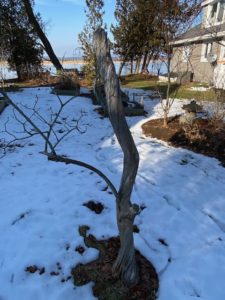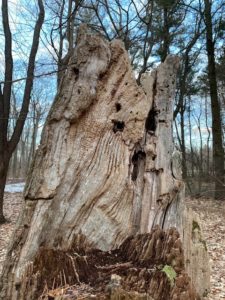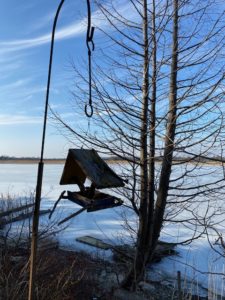The first time I heard of snags in relation to gardens was when I read an article by Myrna Pearman in Gardener Magazine. A snag is any dead or dying tree. They are a component of every healthy forest ecosystem but are usually quickly removed from our urban gardens. A terrible mistake; snags should become a part of our gardens.
Dead trees can support more life per centimetre than live trees. They harbour an abundance of insects and provide perches for birds from which they can fly out to snatch passing insects. Snags are important to birds that require cavities in which to nest. Excavator birds (woodpeckers, chickadees, nuthatches) excavate a cavity and after nesting and raising their young leave the empty cavity to becomes a home for bats, squirrels and other birds.
Tall dead trees are prone to breaking and falling but the risk to injury can be reduced by topping them at 3-4 metres. A live tree that needs to be removed can also be topped to provide an immediate snag.
Gardeners interested in improving the biodiversity in their yards should consider adding a snag. The dead tree skeleton will provide the gardener with a constant performance from the birds and insects.
authored by Joy Cullen



